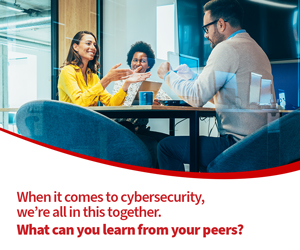Fallacy: Zero Trust Is Merely About Password Strength
While maintaining strong passwords is a fundamental aspect of cybersecurity, zero trust encompasses a broader range of security measures. One key component is multifactor authentication, which requires users to provide multiple forms of identification before gaining access to university systems. Behavior monitoring is another element that constantly analyzes user activities and patterns to detect anomalies. There’s also network analysis, where network traffic is monitored for suspicious activity. So, even if a password is compromised, a hacker must still tackle these other factors to breach the network.
Fact: Continuous Monitoring Is Essential
Because higher ed institutions are data-rich environments with a constant flow of information, continuous monitoring (as part of a zero-trust framework) is essential for identifying and mitigating potential security threats. This involves closely monitoring all the data moving across the network, including incoming and outgoing traffic. For example, a sudden spike in data sent from the network could indicate a data breach. Institutions typically have multiple access points and a variety of networked systems, from administrative databases to online learning platforms, so monitoring is critical for maintaining security.
DISCOVER: Learn the basics of zero-trust adoption.
Fallacy: Zero Trust Is a Set-It-and-Forget-It Solution
Implementing zero trust in higher ed is an ongoing, dynamic process, not a static, one-time setup. Cybersecurity threats are constantly changing, and so are the technologies and methodologies used to counter them. Thus, institutions must be vigilant and proactive in updating their security policies to stay ahead of potential threats. This could mean integrating new security technologies, such as advanced intrusion detection systems or artificial intelligence-based monitoring tools, to identify and respond to sophisticated attacks.
Fact: Microsegmentation Is Key
Microsegmentation is the process of partitioning a network into smaller, more manageable segments or zones. Each segment has distinct access controls and security protocols. This approach is highly beneficial in higher ed settings, where the need for varied access levels across different departments and user groups is a common challenge. If a security breach occurs in one segment, the impact is confined to that zone, preventing the spread of the breach to other parts of the network.
LEARN MORE: Should higher ed institutions prioritize security spending?
Fallacy: Zero Trust Focuses Only on External Threats
Zero trust extends its protective reach beyond external threats, addressing the often-overlooked internal threats. An institution can quickly identify unusual or unauthorized activity by keeping track of who accesses what data, when and from where. Implementing zero trust internally also requires closely examining physical and digital activities within an institution. That means keeping an eye on entry to campus buildings, labs and data centers, and even keeping track of USB drives or other portable storage devices on campus PCs.
Fact: Least-Privilege Access Is Fundamental
Applying the least-privilege principle in a higher ed setting gives users and devices only the access they need for their specific roles. For instance, a student might be granted access to online learning platforms and the library’s digital resources but would not have permission to access administrative systems or research data. This targeted approach not only enhances security but also minimizes risk. Even if a user is compromised, the breach would be contained to only the systems and data that the user could access.
MORE ON EDTECH: What does role-based access control have to do with zero trust?
Fallacy: Zero Trust Is Only Suitable for Large Institutions
Smaller institutions, which have fewer resources than large universities and colleges, can still achieve a high level of cybersecurity with zero trust. The first step is a thorough assessment of the institution’s environment, such as the nature of the data, the types of users accessing the network and the existing technology infrastructure. After this assessment, a smaller institution can tailor the components of zero trust to fit its needs. The key is to focus on the most critical areas of the institution’s operations.
Fact: Educating Users Is Crucial
It’s important to educate everyone about cybersecurity to ensure the overall safety of the institution. This involves training students, faculty and staff on identifying phishing attempts, following safe computing practices, understanding proper data handling protocols and securing their personal devices. It’s equally important to inform them about the correct procedures for reporting suspected security incidents. Regular updates on cybersecurity are necessary because threats keep evolving. It helps people to stay informed and maintain a secure network environment, aligning with zero-trust principles.
Editor's note: This article was originally published on Feb. 2, 2024.
UP NEXT: Three mistakes institutions often make when implementing zero trust.











